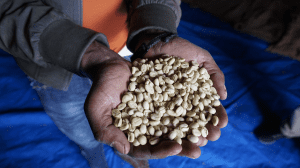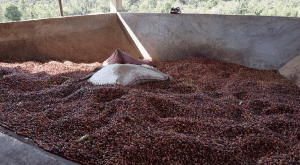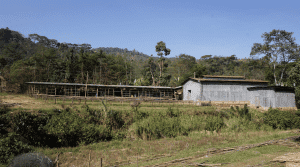ETHIOPIA
WHAT TO EXPECT FROM CROP 2022/2023 ?
WHAT TO EXPECT FROM CROP 2022/2023 ?

Ethiopia is the largest exporter of African coffee production. The country is responsible for harvesting and distributing 3% of the world’s overall coffee bean supply. Exports (2022/2023) are forecasted to reach a record 4.72 million bags.
GEOPOLITICS
Ethiopia’s war in Tigray has ended, but deep faultlines remain
The two-year armed conflict in northern Ethiopia, which began in November 2020, continued to inflict a terrible toll on civilians. A truce was reached by the main warring parties in November. State security forces and armed groups committed serious abuses, in other regions, notably Oromia. Authorities sporadically cut internet and telecommunication services in conflict-affected areas, with internet and other forms of communications cut in Tigray since June 2021. Ethiopia’s war in Tigray has ended, but deep faultlines remain. Lands remain occupied and Eritrean troops have not left.
Conflict and unrest in several regions, followed by drought also exacerbated one of the world’s largest humanitarian catastrophes. Over 20 million people required humanitarian assistance in 2022.
→ According to our local partners in the field, there is no real impact on this year’s production. The coffee has been delivered to the dry mills in Addis Ababa on schedule, despite the ongoing unrest and security risks such as theft and threats affecting their operations.
TRADE
Ethiopia is now exporting over 1000 tons of coffee per day.
Ethiopia’s coffee production for MY 2022/23 (Oct-Sep) is forecast at 8.25 million 60-kilogram bags (495,000 MT). Exports are forecasted to reach a record 4.72 million bags (283,200 MT).
Exports in MY 2021/22 reached to 4.70 million bags (282,000 MT). Ethiopia’s primary export destinations in 2020/21 were Germany, Saudi Arabia, US, Belgium, and Japan. Local consumption in MY 2021/22 is estimated to increase to 3.45 million bags (207,000 MT).
Coffee is Ethiopia’s main export commodity, contributing to the livelihoods of more than 15 million smallholder farmers and other actors in the coffee sector. Many coffee farmers are switching from growing coffee to khat for economic reasons.
According to the Ethiopia Coffee and Tea Authority report, Ethiopia’s six-month coffee export revenue grew by $274 million more than half a billion U.S. dollars in the first half of the current 2021/22 fiscal year. Ethiopia is now exporting over 1000 tons of coffee per day. The six-month revenue figure makes coffee the top performing export product for Ethiopia.
In 2021/22, an estimated 42% of coffee production goes to the domestic market of which around 5% is smuggled for cross-border trade and the black market. The remaining 58% is channeled to the export market, of which around 80–85% goes through the ECX, 5–10% through direct trade by cooperatives, and 5% through commercial farms.
The main reason behind the increased coffee export from Ethiopia is the recurrent drought and the frost that occurred in parts of Coffee Arabica producing areas of South America which affected the volume and quality of coffee arabica production.
→ Exports are forecasted to reach a record 4.72 million bags (283,200 MT)

PRICE
Since last year, the price of the coffee cherry has continued to rise. How did that happen? Let’s analyse this coffee production paradox…
°VERTICAL INTEGRATION:
This is the name given by the Ethiopian Coffee and Tea Authority (ECTA) to a supply chain scheme approved in 2021. The new regulation means that exporters can buy coffee directly from agrabes (ie. aggregators or small washing stations), bypassing the Ethiopia Commodity Exchange (ECX).
The liberalization of the coffee market some years ago result in a higher competition in the market. Farmers can decide where they prefer to deliver their cherries based on the price offered. Moreover, the demand keeps increasing and local cooperatives such as washing stations are benefiting from an higher competition from buyers. The explosion of the number of exporters increased local competition and speculation.
°MINIMUM REGISTRATION PRICE:
On January 28, 2020, the Coffee and Tea Authority coordinated with the National Bank of Ethiopia to establish a directive called the “Export Coffee Contract Administration”. This directive fixes a minimum coffee export price based on the global weighted average price given to different grades of coffee from various regions.
This directive impact exporters, coffee roasters, and coffee farmers. Coffee exporters submit their contracts to the National Bank of Ethiopia (NBE). At the end of each day, the NBE delivers the contracts to an Association-team. The team compares the prices with international and local coffee prices. Then, they use an average weighted method to calculate a new minimum price. Coffee exporters base their contract prices on the new minimum the next day.
°CURRENCY POLICY:
Due to critical shortage of foreign currency in the country, the National Bank of Ethiopia has announced a directive on the amount of foreign currency exporters can retain and use for importing other goods from their export earnings. As most exporters use coffee export earnings to pay for their imported goods and services, this new directive partially limits the amount of import of other goods and services. The directive states that only 20% of coffee exporters earnings made through export may be retained in USD for their import. The remaining earnings must be converted to Birr for local use. This directive has caused some dissatisfaction among exporters and provoked campaigns against the new directive to have the 20% limit raised.
Coffee is the main source of dollars in Ethiopia. The currency is used to import profitable goods into the country. This is why exporters used to sell coffee so cheaply in Ethiopia. They profited from imports, not exports.
°SELECTIVE PICKING
Selective picking – necessary to produce the highest quality coffee – logically also reduces yields, reducing exports. Reduced exports mean less foreign currency. Less foreign currency means less liquidity and fewer opportunities to buy goods for import at competitive prices. So as the need for more exports increases, so does competition for cherries, requiring a softening of cherry selection requirements and a willingness to work outside trusted or established grower networks to collect larger volumes of cherries.
In other words, the 2022-2023 Ethiopian harvest was driven by economic pressures: inflation, a shortage of foreign exchange and cherry prices that surpassed last year’s already high prices by more than 200%. A paradox of coffee production is that higher prices tend to lead to lower qualities since.
→ The 2022-2023 Ethiopian harvest was driven by economic pressures: inflation, a shortage of foreign exchange and cherry prices that surpassed last year’s already high prices by more than 200%. The paradox of coffee production is that higher prices have more often led to lower qualities.

ETHIOPIAN CROP 2022/2023 WHEREABOUTS
Our selection for the new harvest has been completed and our containers are about to leave Djibouti.
→ Do you want to secure your lots? Contact us to buy the new harvest so that you can easily make your choice.
→ What if you can’t wait for the new harvest and you need Ethiopian beans from our SPOT position? Contact us for our latest offer list.